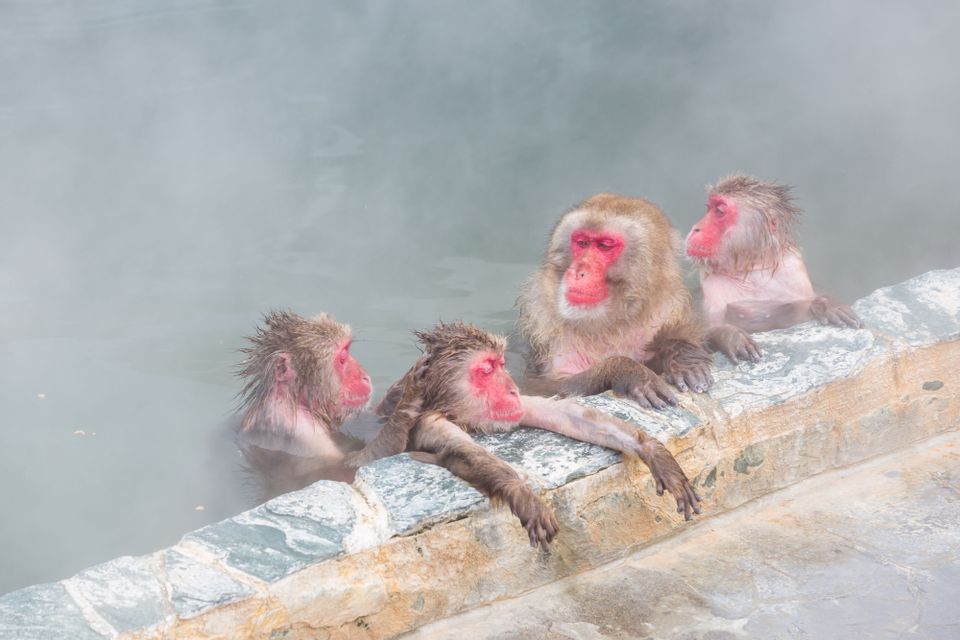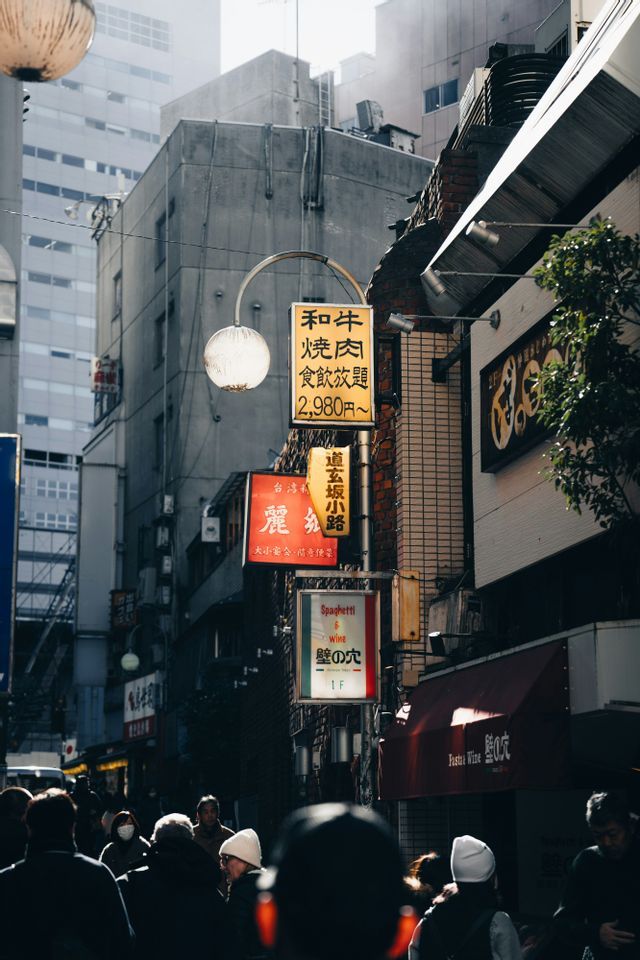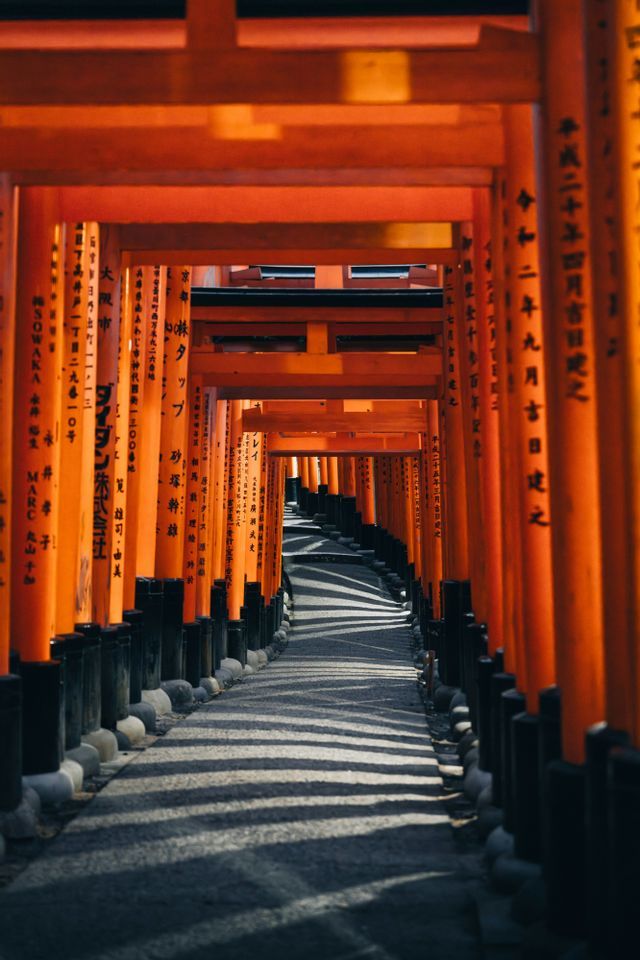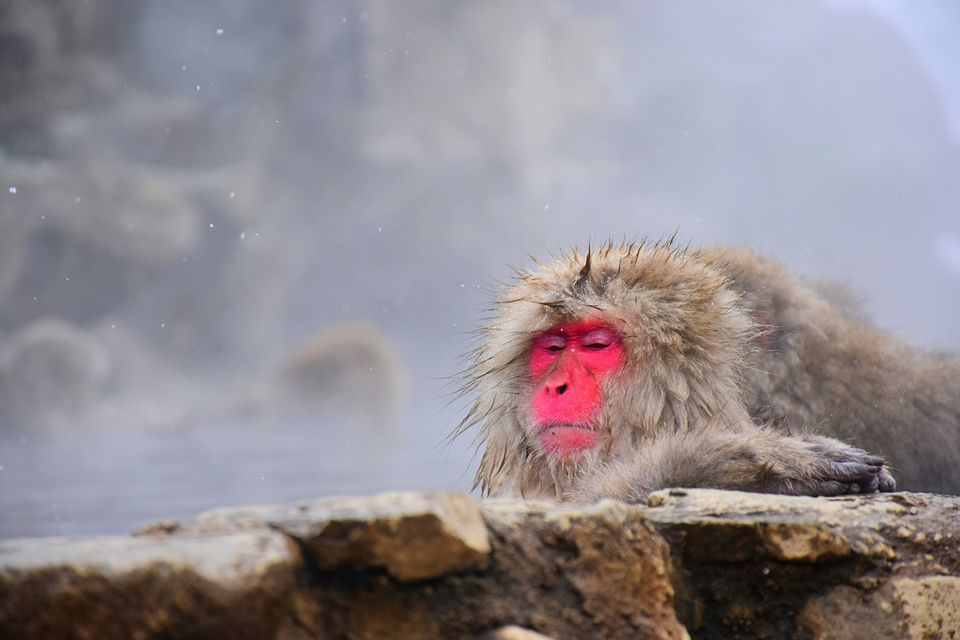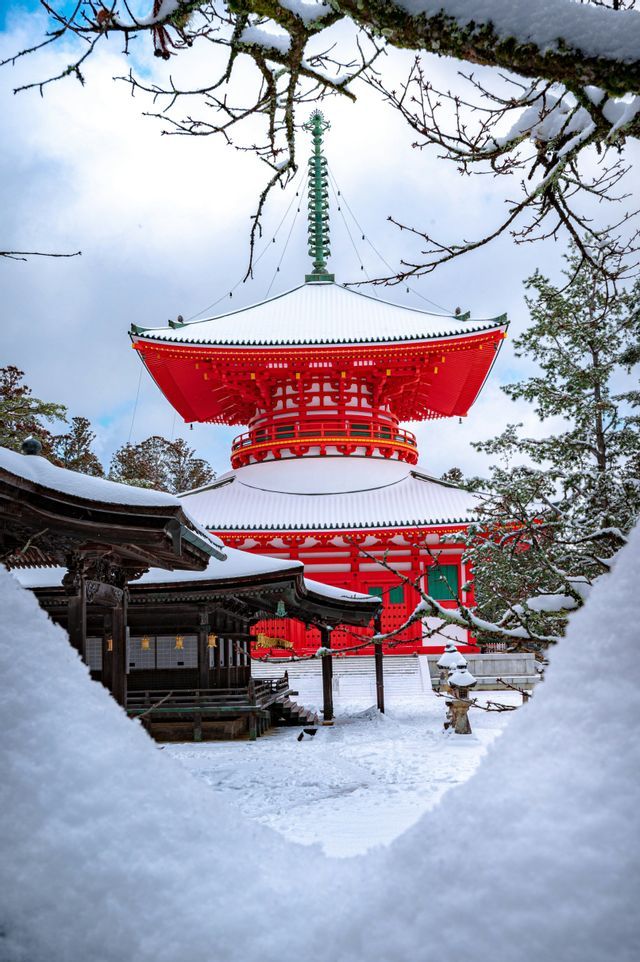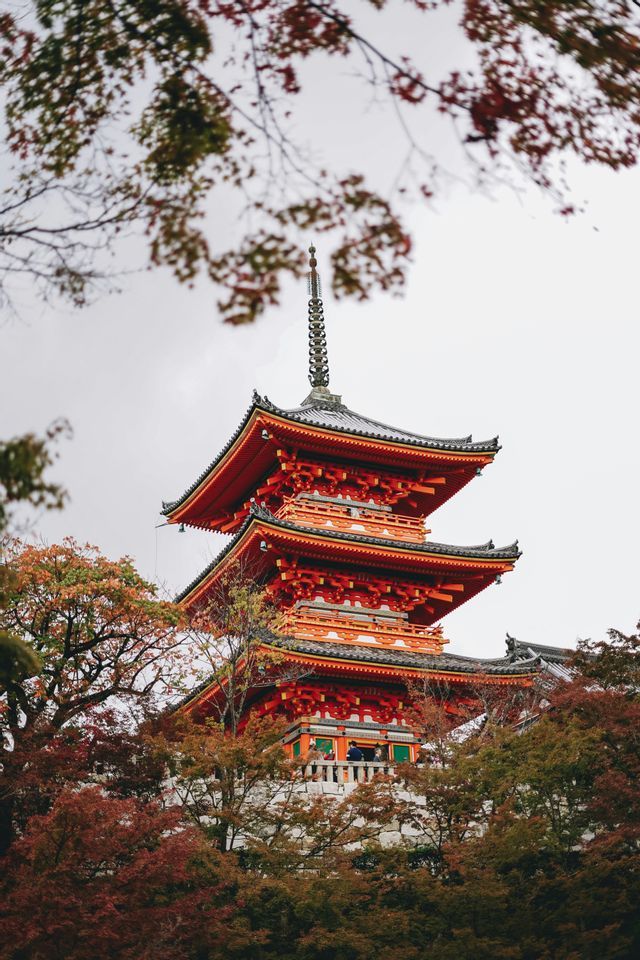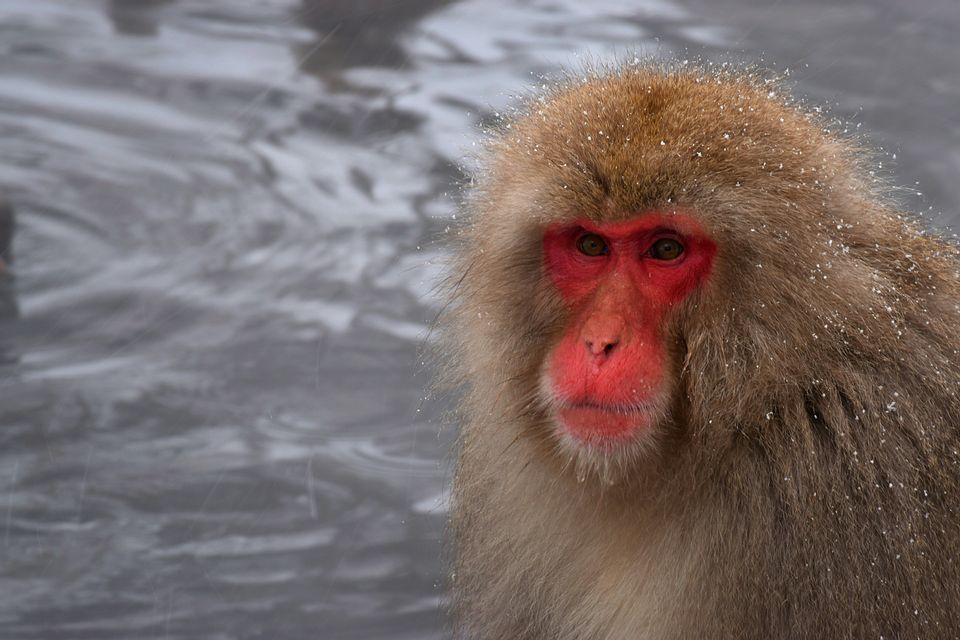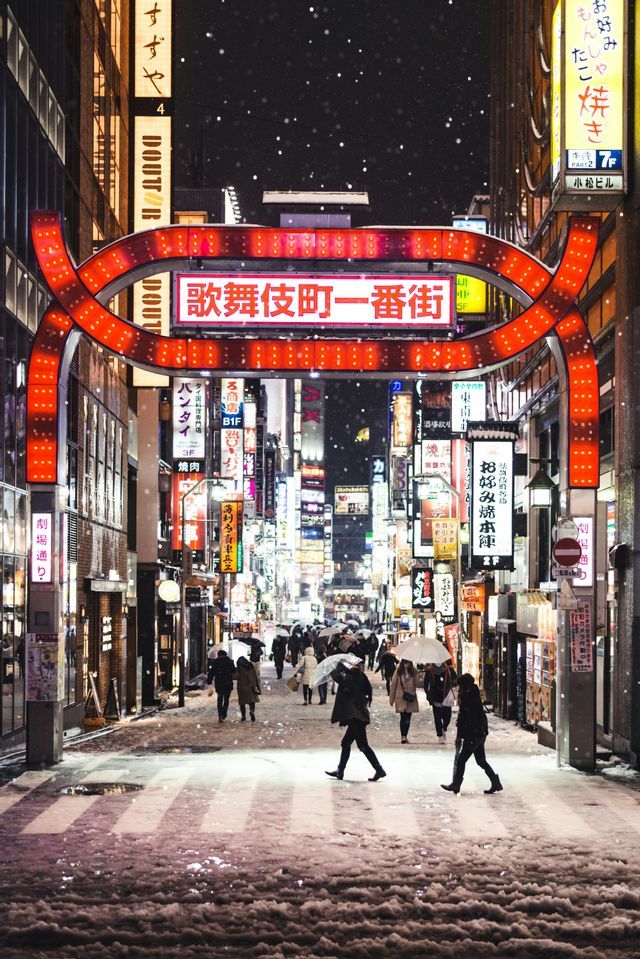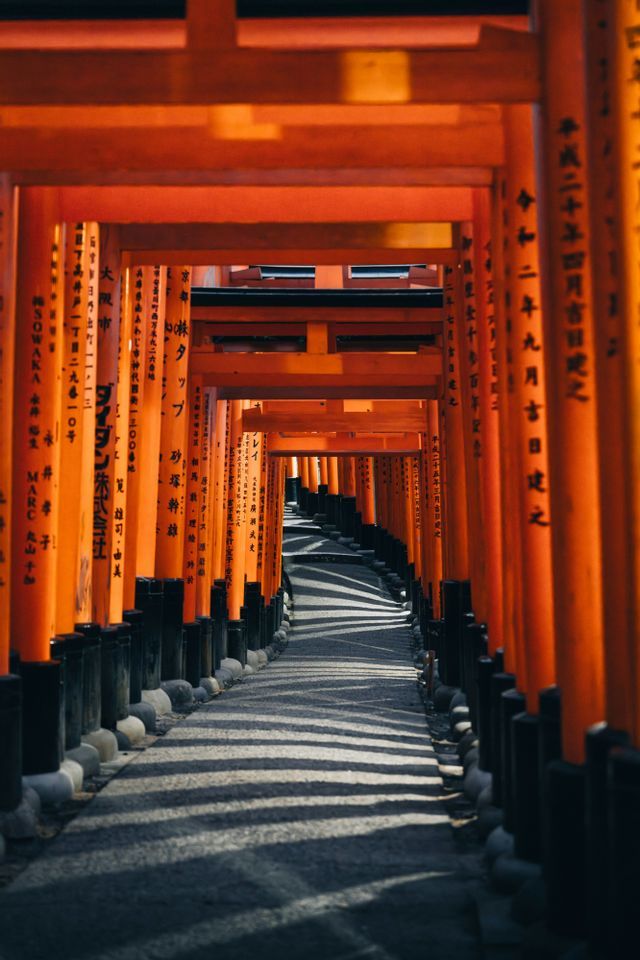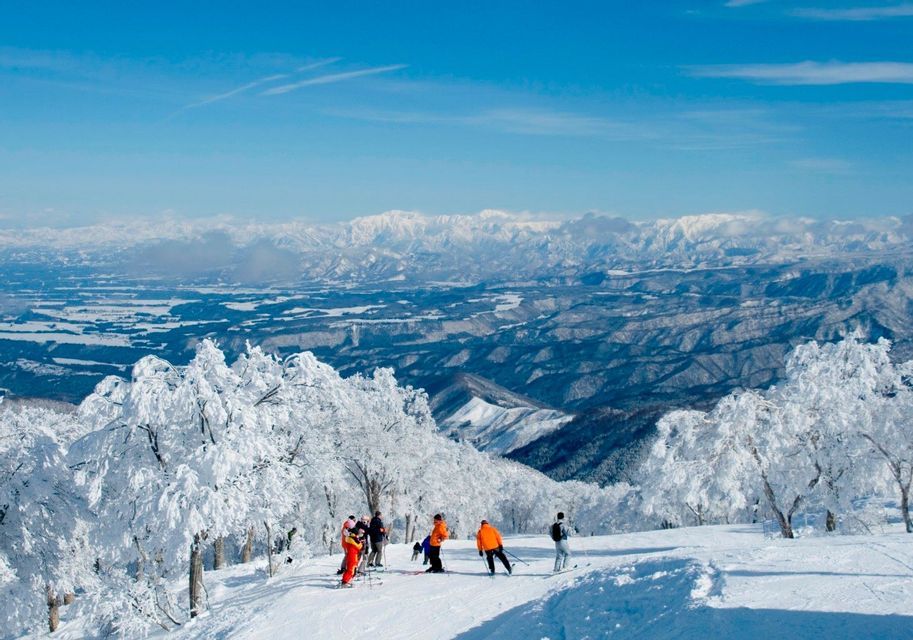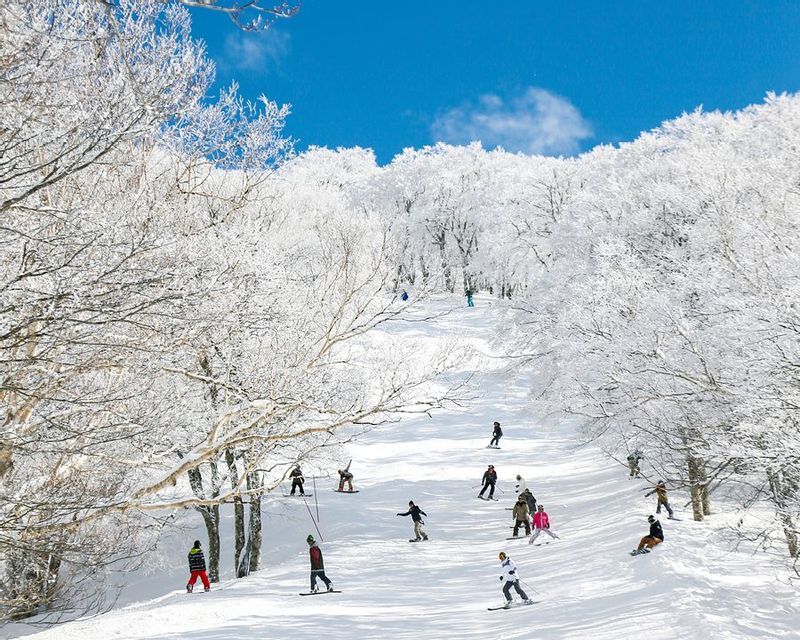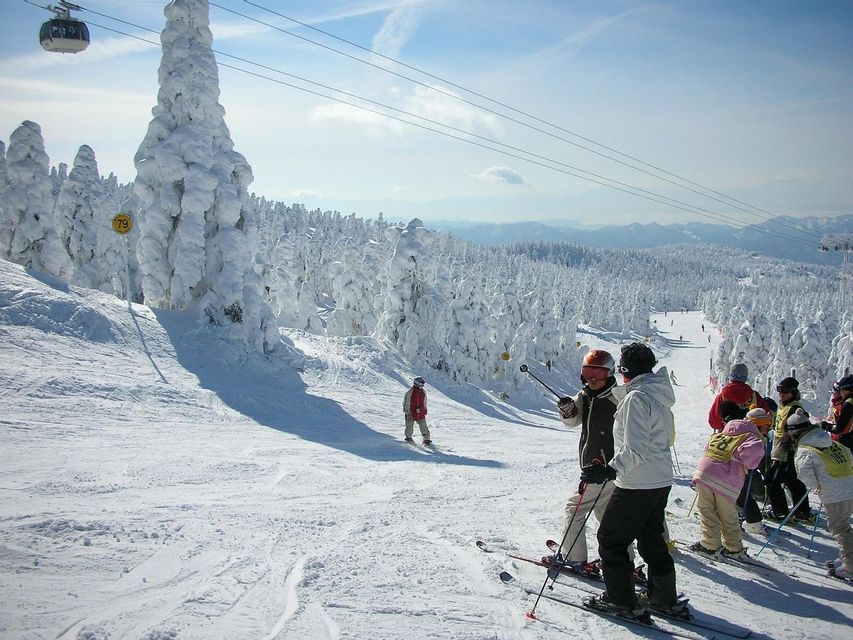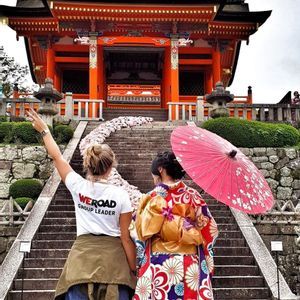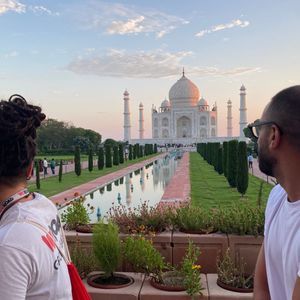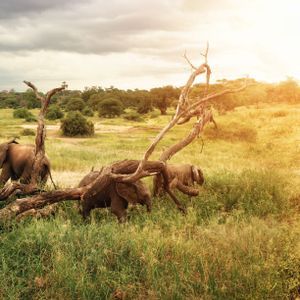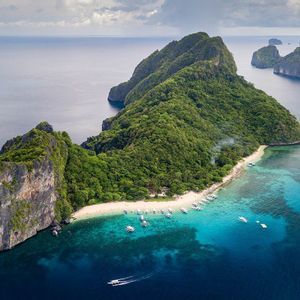Japan Ski & Snowboarding: From Tokyo to the Mountains of Nagano
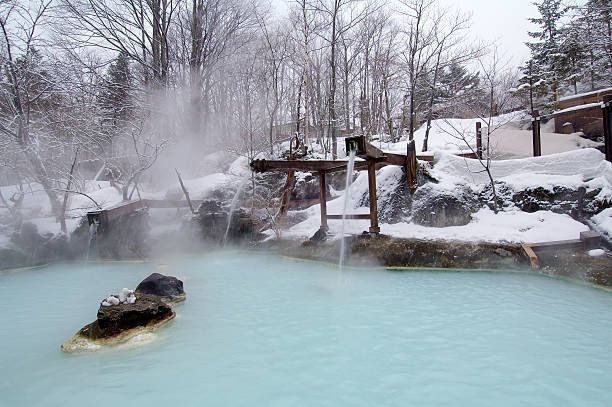
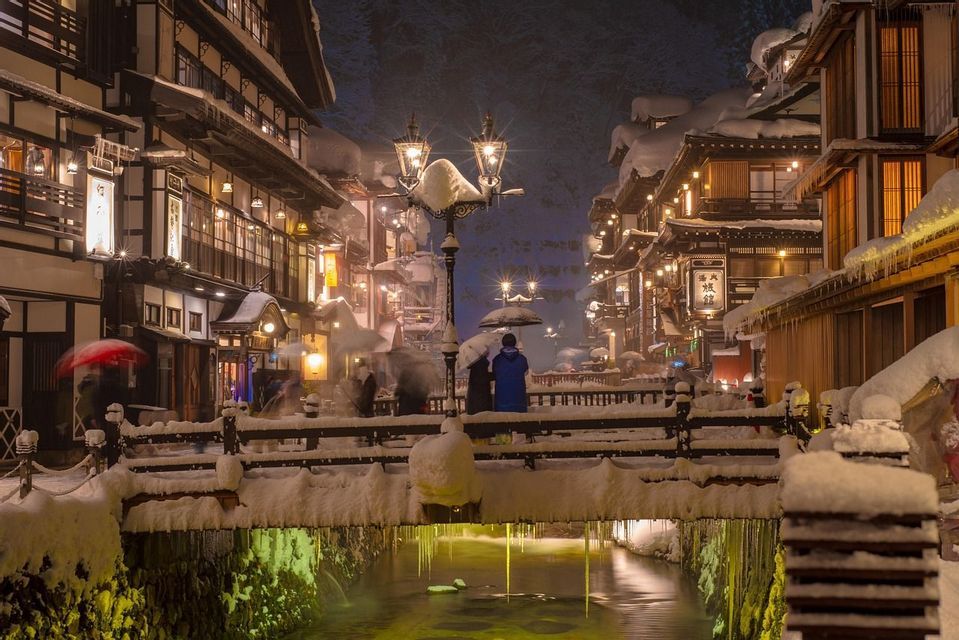
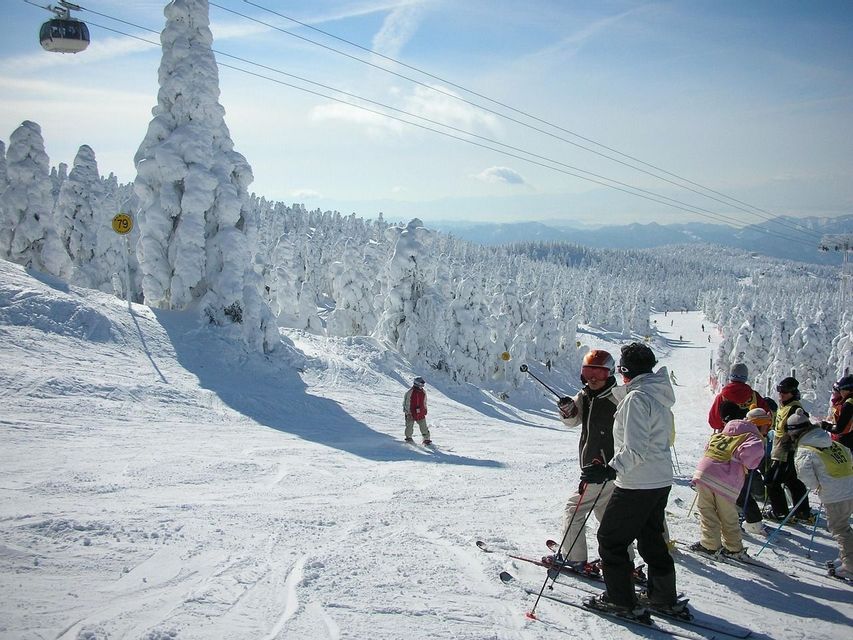
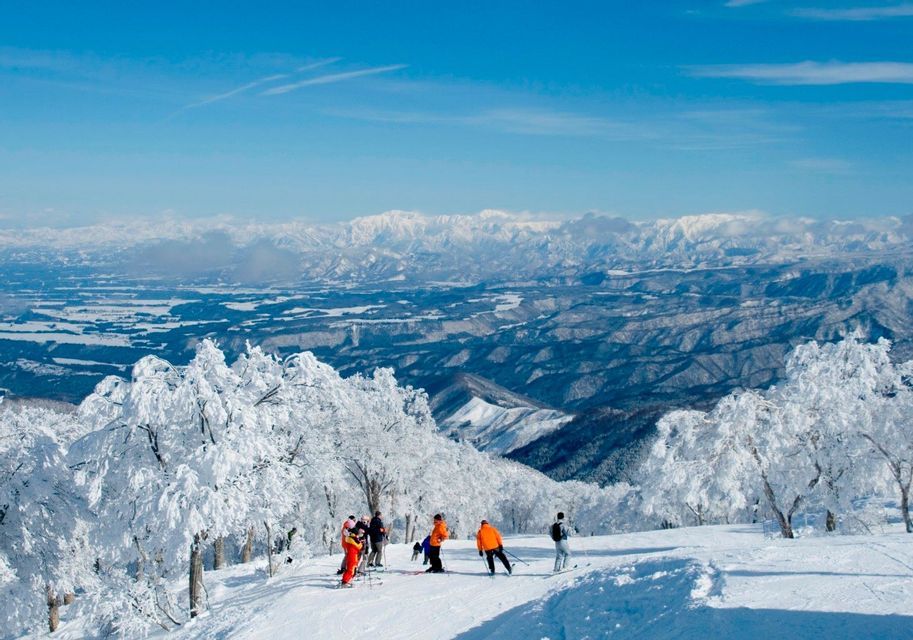
No departure dates scheduled
Want to know when there will be new departures? Enable notifications!
Itinerary
Our journey through Japan, exploring tradition, culture, and winter sports, begins in Tokyo , a futuristic metropolis where skyscrapers and temples coexist in perfect harmony. We explore the neighbourhoods of Shibuya , with its iconic pedestrian crossing, Akhiabara with its famous manga shops, and Shinjuku , with its neon lights. Meanwhile the tranquility of the Meiji Shrine and the ancient charm of Asakusa with the Senso-ji temple offer a fascinating contrast. We continue on to Kyoto , the heart of Japanese culture, among shrines and Zen gardens. Strolling through the Fushimi Inari Taisha , with its endless red torii, is a mystical experience. Kinkaku-ji , the Golden Temple, leaves you breathless with its beauty reflected in the lake...but not only that, in Kyoto we can also participate in a tea ceremony and test our culinary skills with a sushi cooking class ! We'll also have the opportunity to stay in a traditional Japanese ryokan . Kinkaku-ji , the Golden Temple, is breathtaking in its beauty reflected in the lake. This journey concludes with an forgettable ski escape in Nagano Prefecture, renowned for its powdery slopes and winter charm. Whether you're in Shiga Kogen, Hakuba, or Nozawa Onsen, you'll find world-class skiing paired with the soothing tradition of onsen hot springs - ideal for unwinding after a day on the mountain. This itinerary beautifully blends the vibrant energy of Japan’s cities, the timeless allure of tradition, and the breathtaking beauty of the Japanese Alps.
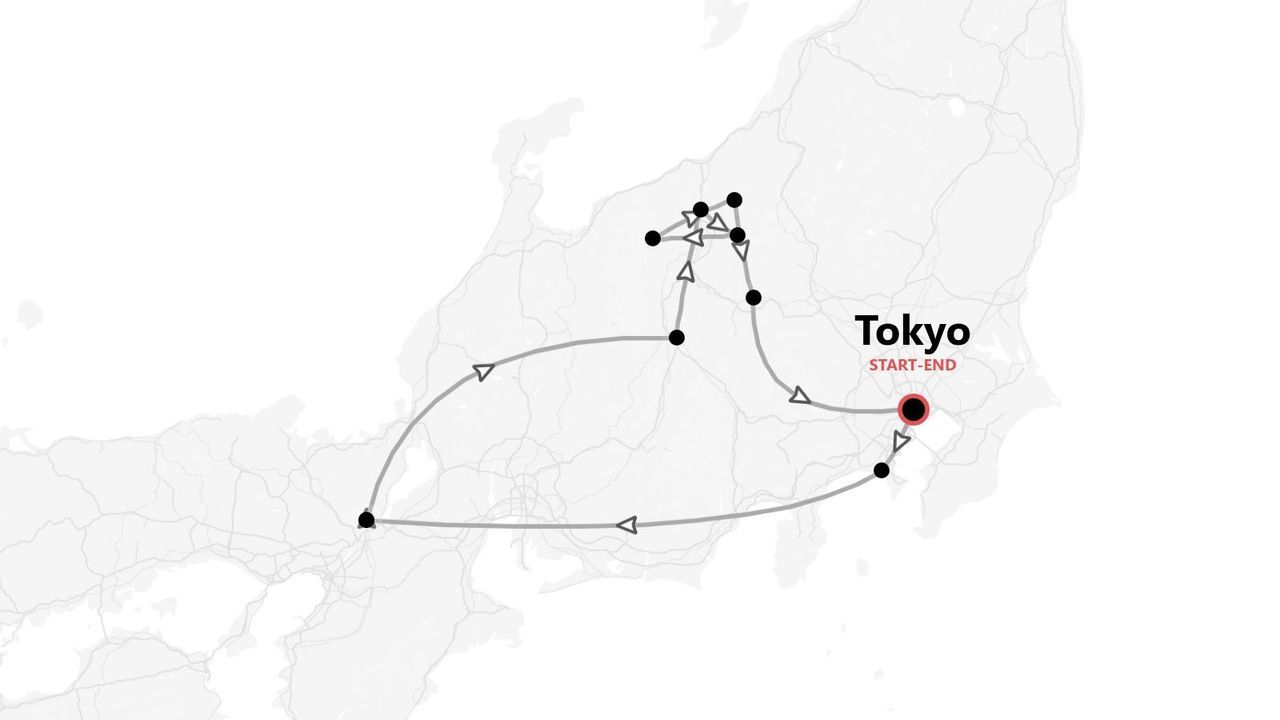
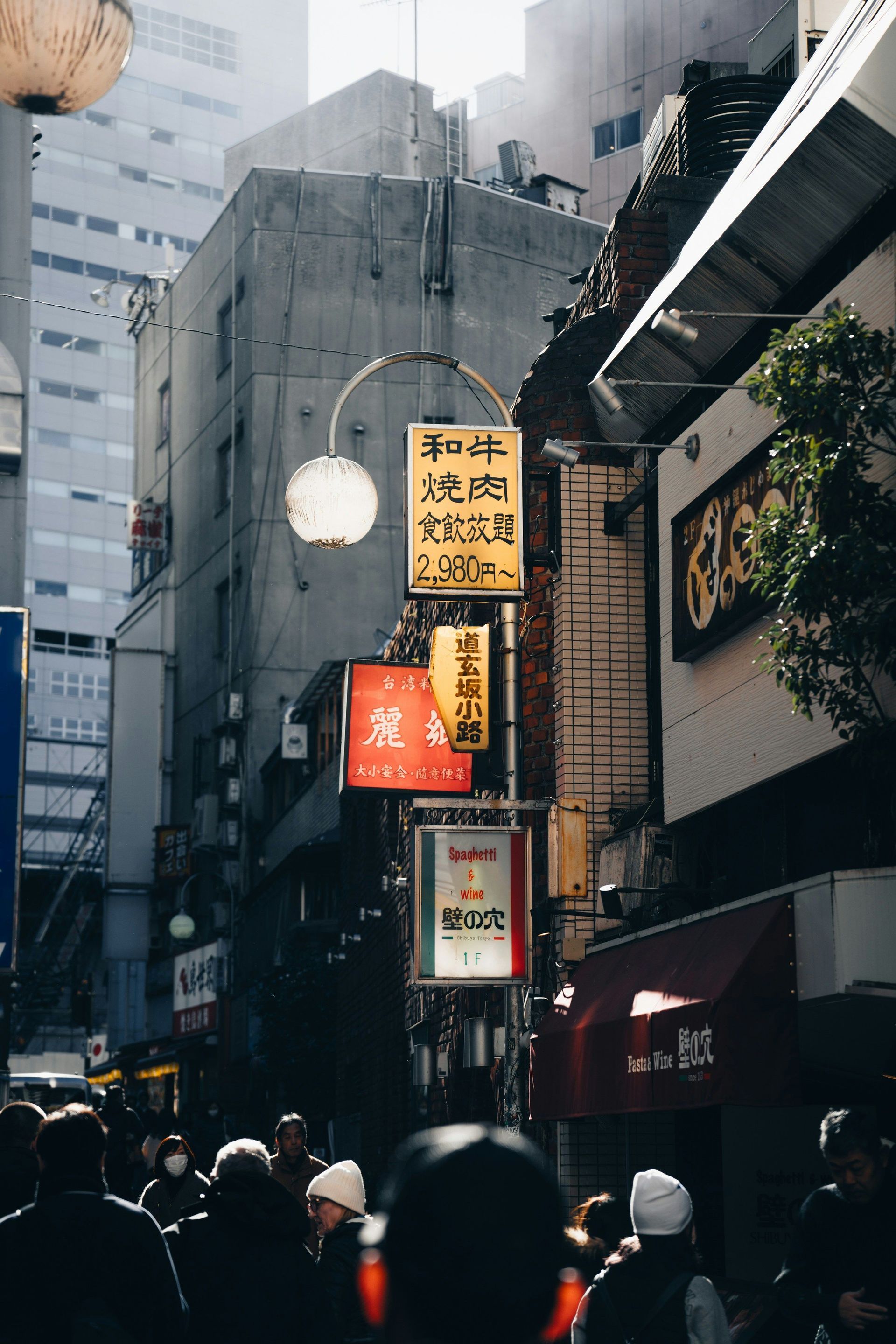
Welcome to Japan!
Tokyo
We hit the ground running tonight—no time to waste. Our Japan adventure begins with a nighttime stroll through Asakusa to visit Sensō-ji, Tokyo’s oldest Buddhist temple. Entering through the iconic Kaminarimon, or “Thunder Gate,” we’re greeted by a massive red paper lantern that glows against the night sky. It’s a short visit before dinner, just enough to soak in the atmosphere… and then, finally, it’s sushi time.

Kamakura: Temples and Traditions
Traditions
After a first taste last night, today we continue exploring the capital, discovering both its traditional and modern sides. This morning we head to Kamakura, our first stop being Engaku-ji , one of the most important Zen Buddhist temple complexes in Japan, followed by the Shinto shrine of Torugaoka Hachiman and a visit to Gotoku-ji temple, known for its large seated Buddha statue—one of the few Buddha statues open to the public!
Modern Japan
In the afternoon, we return to the heart of Tokyo, stopping at Hachikō-guchi, where the statue of Hachikō—the loyal dog who waited for his owner every day for years—greets us at one of the city’s most iconic meeting points. Just steps away, we find ourselves at the legendary Shibuya Scramble Crossing. It’s the most famous pedestrian intersection in Japan and one of the busiest in the world, where hundreds (and sometimes thousands) of people surge across from every direction the moment the light turns green.
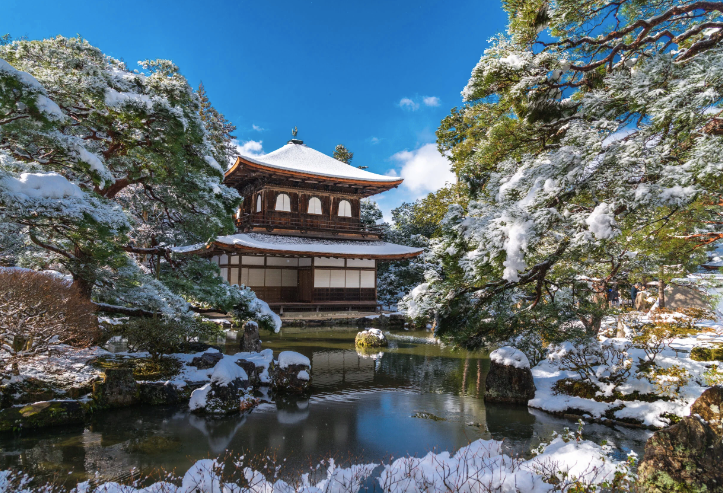
All Aboard to Kyoto
Flavors and traditions
This morning, we hop on the iconic Shinkansen—the sleek bullet train that races us from Tokyo to Kyoto in record time. Once we arrive, it’s straight to lunch with a visit to Nishiki Market, the vibrant heart of Kyoto’s food scene. Spanning five lively blocks, this maze of stalls and family-run shops is packed with colors, aromas, and flavors. It’s the perfect place to sample anything and everything Japanese—from street snacks to local specialties.
The Golden Temple
After indulging our senses at Nishiki Market, we shift from flavor to pure beauty with a visit to Kinkaku-ji—the legendary Golden Pavilion. As we approach, the sight is absolutely stunning: the shimmering gold temple reflected perfectly in the still waters of Kyōko-chi pond creates a surreal scene, like a painting floating between sky and water. It’s one of those moments where we just stop and take it all in.
60 minutes from…now!
After all the incredible food we’ve tasted so far, it’s our turn to step behind the counter with a hands-on sushi-making class! No pressure here—mistakes are welcome and there are no eliminations. It’s all about having fun, learning some traditional techniques, and rolling our way through a delicious experience.

Fushimi Inari Shrine
The most famous shrine in Japan
This morning, we set off to explore one of Japan’s most iconic spiritual sites: Fushimi Inari Taisha. The moment we step through its entrance, we’re surrounded by a mystical atmosphere that feels suspended in time. Dedicated to Inari, the Shinto god of rice and prosperity, this shrine is where nature and spirituality meet in perfect balance. We follow the path lined with over a thousand vibrant red torii gates, winding their way up Mount Inari, creating a tunnel of colour and serenity. Walking through them is like moving through a living painting—every step more magical than the last.
The Tea Ceremony and the Temple Suspended in a Dream
n the afternoon, we slow the pace with a visit to a traditional chashitsu—a tea room with tatami floors, delicate decor, and the soft aroma of incense in the air. Here, we witness the timeless ritual of the Japanese tea ceremony, guided by a tea master whose graceful, deliberate movements invite calm and reflection. From there, we make our way to one of Kyoto’s most breathtaking landmarks: Kiyomizu-dera, the “Pure Water Temple.” Perched on a hillside and surrounded by forest, it seems to hover in the air. We ascend Sannenzaka Avenue, passing charming wooden houses and shops that feel straight out of feudal Japan. Once we reach the temple, we step onto its famous wooden terrace—built without a single nail—and take in a panoramic view of Kyoto that stretches as far as the eye can see.
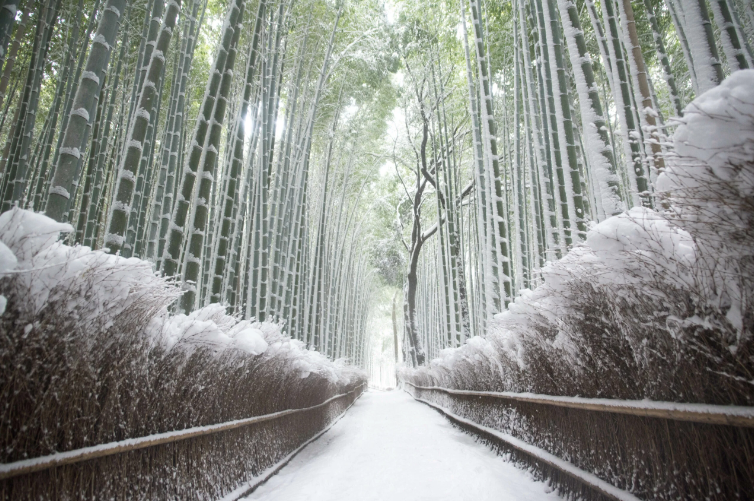
From bamboo groves to snowy peaks
Arashiyama: Nature and tranquility
We begin the day surrounded by emerald green, stepping into the serene Arashiyama Bamboo Forest. The moment we enter the path, we're wrapped in a dreamlike stillness—towering bamboo stalks soar up to 50 meters high, swaying gently above us and filtering the morning light. It feels like walking through a natural cathedral. Nestled near the forest’s northern edge is Tenryu-ji, a UNESCO World Heritage Site and one of Kyoto’s most important Zen temples—an invitation to pause and reflect before the scenery shifts again.
Bound for Nagano
In the afternoon, we board the Shinkansen once more—this time heading toward a completely different Japan. As we speed away from Kyoto, the landscape transforms before our eyes: skyscrapers give way to rice fields, quiet towns, and wide open countryside. The air grows crisper, and distant mountains appear, their peaks dusted with snow. We're arriving in Nagano, where nature takes center stage. For the next three days, we’ll call these alpine landscapes home—between relaxing onsen, cozy mountain resorts, and the magic of Japan’s winter side.
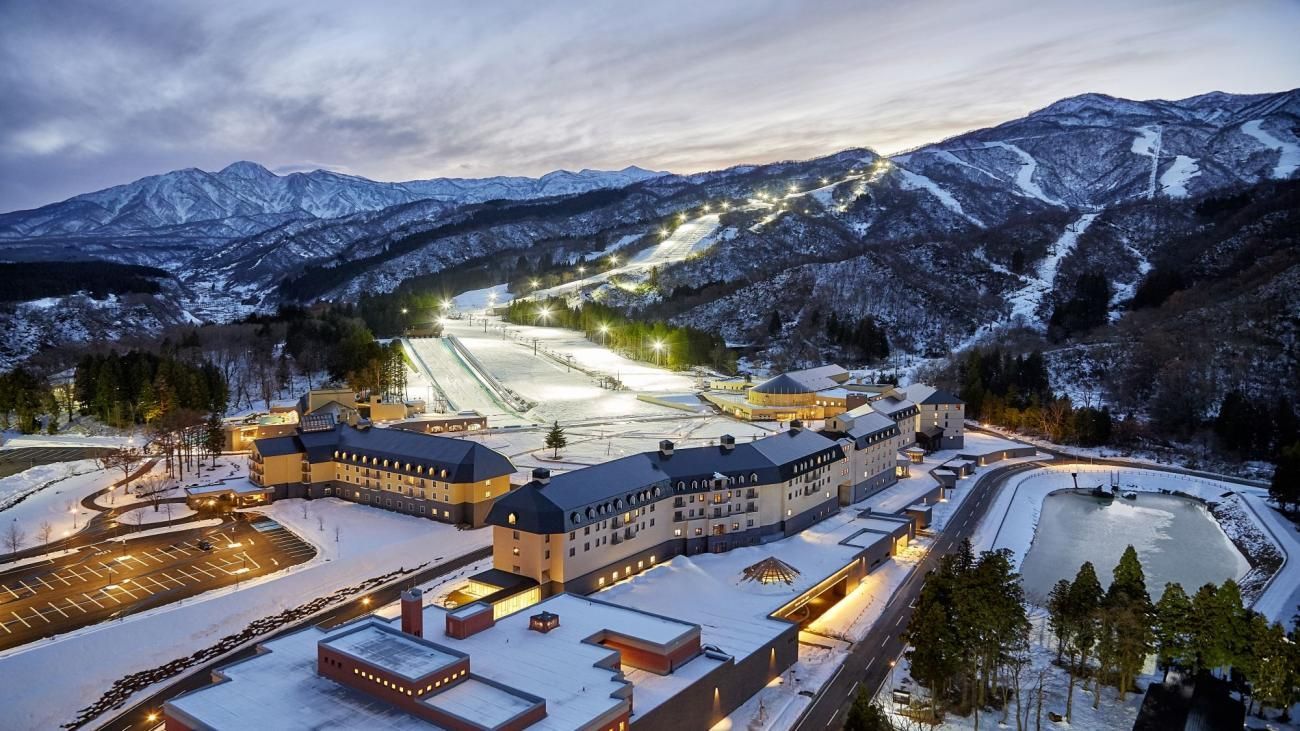
First Tracks in Myōkō Kōgen
Myōkō Kōgen
Today marks the beginning of our skiing adventure, and we’re kicking things off in Myōkō Kōgen—one of Japan’s oldest and most beloved alpine areas. This mountain region is home to several interconnected ski resorts, offering runs for every level, whether we’re just starting out or chasing thrills. The real highlight? Japan’s longest continuous slope—a stunning 8.5 km descent we can’t wait to carve our way down. Let the snow-filled fun begin!

Shiga Kogen: Olympic Slopes and Endless Runs
Shiga Kogen
Today we head to Shiga Kogen, one of Japan’s largest and most impressive ski areas—and we're dedicating the whole day to it. This massive resort is made up of 19 interconnected ski zones, all accessible with a single pass. With over 80 km of slopes and 50 lifts, there’s something for everyone—from wide, gentle runs to steep, technical descents. And there's history beneath our skis too: Shiga Kogen was a venue for the 1998 Nagano Winter Olympics. Whether we’re chasing speed or just soaking up the scenery, it’s going to be an unforgettable day on the mountain.

The heart of the Japanese Alps
Hakuba
Another day on the snow, another incredible resort to discover! Today we head to Hakuba, one of Japan’s most iconic ski destinations, nestled in the stunning Northern Japan Alps. Rather than a single resort, Hakuba is a network of 10 distinct ski areas, each with its own vibe and specialties—from powder-filled bowls to perfectly groomed runs. With so much terrain to explore, the only question is: which slope do we hit first?

Snowy slopes and soothing springs in Nozawa Onsen
Nozawa Onsen
As the name suggests, today’s destination blends the thrill of skiing with the charm of tradition: Nozawa Onsen. This resort isn’t just known for its powdery slopes—it’s also home to one of Japan’s most historic hot spring villages, where natural onsen waters have been flowing for over 1,300 years. After a day on the mountain, we unwind with a steamy soak and take a peaceful stroll through the village’s quaint streets, lined with artisan shops, cozy inns, and local eateries. It’s the perfect balance of adventure and relaxation.
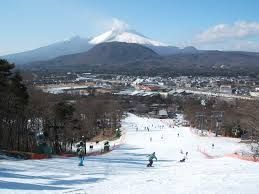
A snowy escape to Karuizawa
A snowy escape to Karuizawa
That's right, there are so many ski resorts around Nagano that you'll never get bored! We could easily return to one of the resorts we visited in the past few days, of course, but our advice is to explore Karuizawa, a smaller but well-maintained resort with slopes suitable for everyone!
In the afternoon, before sunset, we can choose to take a stroll through the quiet center of Karuizawa or warm up with a hot chocolate while looking at the snow-covered slopes.
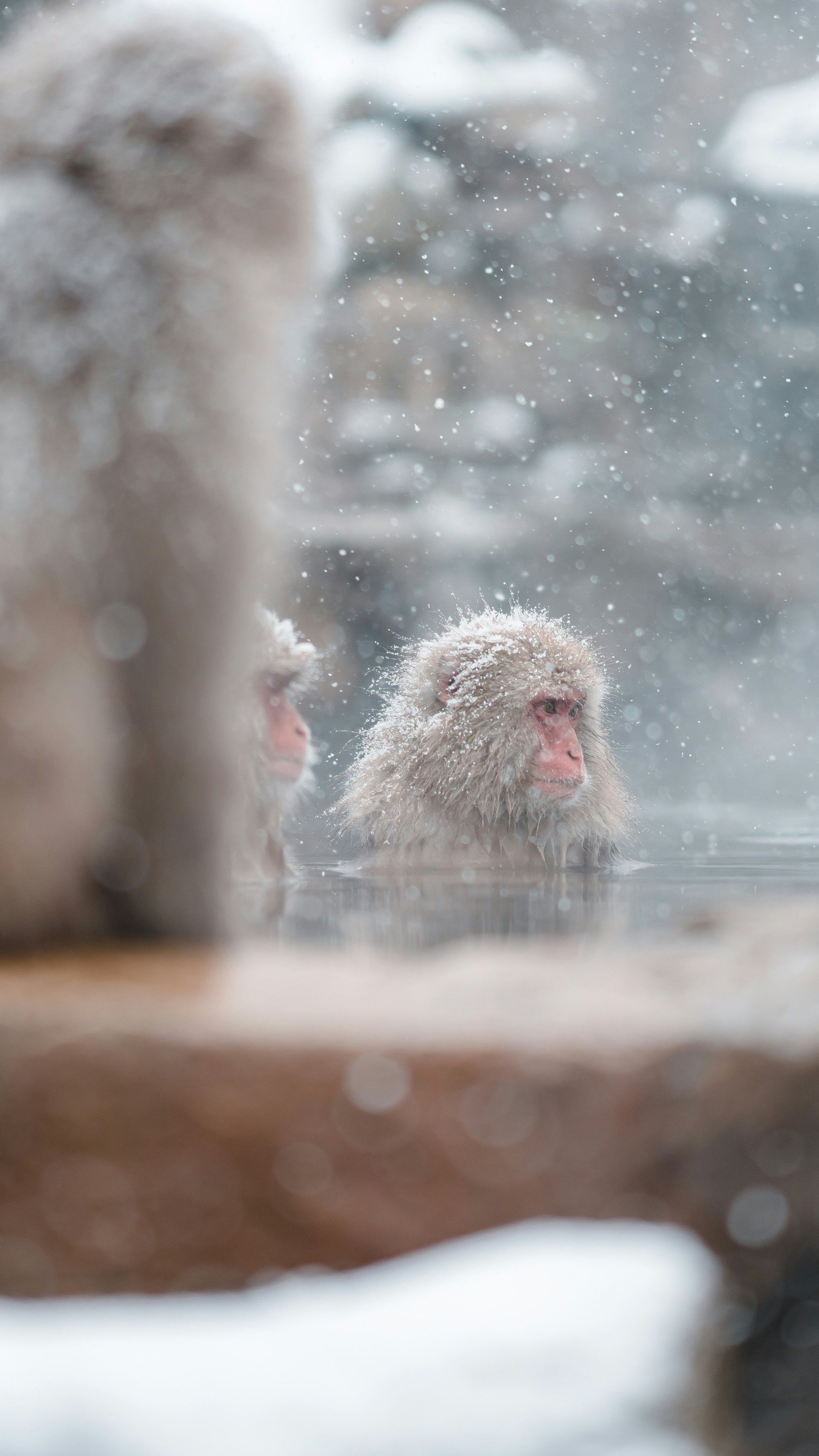
Monkeys, temples, or one last run
Monkeys, Temples, or One Last Run
Before heading back to Tokyo in the evening, we’ve got one last day to enjoy the magic of Nagano—and several great ways to spend it. If we’re still hungry for the slopes, there’s no shortage of incredible resorts to return to. Prefer to unwind? A peaceful soak in one of the local onsen might be calling.
For those up for a bit of exploring, a visit to Jigokudani Monkey Park is hard to resist. Here, we can watch the famous snow macaques lounging in the steamy natural hot springs—a scene that’s as amusing as it is iconic. Alternatively, we can take a cultural detour to Zenko-ji, one of Japan’s oldest and most revered Buddhist temples, founded in the 7th century and home to the country’s very first Buddha statue.
Whether we choose adventure, relaxation, or history, it’s a beautiful way to wrap up our time in Nagano.

Goodbye Japan!
Goodbye Japan!
Time to say goodbye: see you in your next WeRoad adventure!
What's included
Shinkansen from Tokyo to Kyoto on day 3
Shinkansen from Kyoto to Nagano on day 5
5 days of daily ski pass, days 6, 7, 8, 9 and 10
Shinkansen from Nagano to Tokyo on day 10
11 nights: accommodation in a shared room with private bathroom
Medical and baggage insurance - (coverage limits by destination country/region - €10,000 Italy, €20,000 Europe, €30,000 World, €50,000 USA/Canada)
What's not included
Roundtrip flight to/from destination
Food and beverages when not specified
All the extras you'll be able to fit in your backpack
- Anything not mentioned in the "What's included" section
Money pot
The amount to hand over to the coordinator is approximately £260/€300. The money pot is used to cover any extra activities the group wants to join, on top of the services already included. That’s why the total can vary, and it might need to be topped up. Don’t worry though - whatever isn’t used gets refunded.
- Entrance to temples in Tokyo and Kyoto
Tea ceremony
Transfers not included above
- Ski/snowboard equipment rental
- Cooking class
Coordinator's money pot share
All extra activities that each member of the group agree on doing and the coordinator's fee as well
Additional info
Shared rooms with private bathroom
- Private Room Option Show all details
Why WeRoad
-
Small groups, on average 11 people
-
Free cancellation with 100% refund up to 31 days before departure
-
Book with a £/€100 deposit
The travel coordinators
Find your flight
For this trip, we recommend arriving and departing from these airports.

This is a WeRoadX
A trip designed and created entirely by an experienced WeRoad Travel Coordinator.
This is a trip designed and created entirely by an experienced WeRoad Travel Coordinator. They organise the whole trip: from defining the itinerary to selecting accommodation and on-site experiences. On the WeRoad website you can book the trip and manage it in MyWeRoad, just like any other WeRoad.
FAQs – Frequently Asked Questions
About this trip
This journey begins at tokyo. On the first day, we meet at 19:00.
Your Coordinator will add you to the WhatsApp group for your trip about 15 days before departure.
It’s a great way to start getting to know your travel mates, receive more details about the first day’s meeting point, and ask any pre-departure questions you might have.
This journey ends at tokyo. On the last day, you are free to leave at any time, so whether you need to book a flight, a train, or wish to continue the journey on your own, you can organize your return as you prefer.
For this itinerary, soft luggage is required for logistical reasons and the convenience of the whole group - including yourself! Soft luggage includes backpacks, duffel bags, or sports bags, but not trolleys or bulky suitcases. The Travel Coordinator will provide guidance on the ideal baggage before departure via the WhatsApp group.
About Japan
If you are a UK citizen, to find out the entry requirements for Japan, you can check this informational page from our partner Sherpa. If you need a visa, you can apply for it through Sherpa. If you are not a UK citizen, you can still use Sherpa by changing the nationality in the 'Passport' section.
Before traveling, always remember to check the government website of your country of origin for updates on the entry requirements for Japan – you wouldn’t want to stay home due to a bureaucratic detail!
- UK residents: review the FCDO Travel Advice.
- US residents: consult the US Department of State Travel Advice.
- Other residents: refer to your government or local consulate's travel advice.
Japan is in Japan Standard Time (JST), which is 9 hours ahead of GMT. Japan does not observe daylight saving time, so the time difference with the UK differs throughout the year.
The currency in Japan is the Japanese Yen (JPY). You can easily exchange your Euros or other currencies at airports, banks, and authorized currency exchange counters throughout the country.
It's always a good idea to compare exchange rates to get the best deal.
Credit cards and debit cards are widely accepted in Japan, especially in major cities, department stores, and hotels. However, many smaller shops, restaurants, and rural areas might only accept cash. It's a good idea to carry some Japanese Yen with you. ATMs are available in convenience stores and banks, and you can use international cards there. Mobile payment apps like Suica or PayPay are also becoming more popular and might be handy during your stay.
Tipping is not customary in Japan, and in many cases, it can even be considered rude. Instead, excellent service is expected, and the price you see is the price you pay. If you really want to show your appreciation, you might consider giving a small gift instead. It's always a good idea to respect local customs, so just enjoy the great service you receive without worrying about tipping.
In Japan, staying connected to the internet is pretty easy. You can rent a portable Wi-Fi device at the airport or order one online for delivery to your hotel. These devices provide unlimited data and are convenient for multiple users. Alternatively, you can purchase a prepaid SIM card at electronic stores or convenience stores.
Public Wi-Fi is available in many places like cafes, hotels, and train stations, but it's not as widespread as in some other countries. Japan does not fall under the EU roaming agreements, so make sure your phone is set up for international roaming if you plan to use your home data plan.
The official language in Japan is Japanese. While traveling, you might hear or use some common expressions:
- Hello: Konnichiwa
- Thank you: Arigatou
- Excuse me: Sumimasen
In Japan, they use Type A and Type B plugs. Type A has two flat parallel pins, while Type B has the same two pins plus a grounding pin. The voltage is 100V with a frequency of 50-60Hz. You might need an adapter and possibly a voltage converter for your devices. Check your electronics to see if they are compatible with this voltage to avoid any issues.
The main religions in Japan are Shinto and Buddhism. Shinto is native to Japan and involves various rituals and festivals. Buddhism was introduced from China and Korea and has a significant influence on Japanese culture.
Neither religion has strict practices, and many Japanese people incorporate aspects of both into their lives, along with secular beliefs. There are no specific dress codes or religious holidays that require special preparation for travellers.
For a trip to Japan, pack wisely to make the most of your experience.
Here's a handy list of items to include in your backpack for Japan:
-
Clothing
- Light layers for spring and autumn
- Breathable clothes for summer
- Warm clothing for winter
- A raincoat or umbrella -
Shoes
- Comfortable walking shoes
- Slip-on shoes for temple visits
- Sandals for warmer months -
Accessories and Technology
- Universal adapter for Type A and B plugs, 100V voltage
- Portable charger
- Camera or smartphone for photos -
Toiletries and Medication
- Basic toiletries like toothbrush, toothpaste, and shampoo
- Sunscreen
- Common travel medication like pain relievers, motion sickness tablets, and any personal prescriptions
Japan's weather can vary greatly, so it's best to check the forecast before you go.
Japan's weather varies greatly depending on the region and season. Here's a quick guide:
- Hokkaido (North): Cold winters with heavy snowfall, mild summers. Best time to visit is summer for outdoor activities.
- Tokyo (Central): Hot and humid summers, mild winters. Spring (March to May) and autumn (September to November) are ideal for visiting.
- Kyoto & Osaka (West): Hot summers, cool winters. Spring and autumn are perfect for enjoying cherry blossoms and autumn leaves.
- Okinawa (South): Subtropical climate with warm temperatures year-round, occasional typhoons in late summer.
For a pleasant experience, consider visiting during spring or autumn when the weather is generally mild across the country.
Travel insurance is not legally required for visiting Japan, but it is highly recommended. Medical care in Japan can be expensive, and having travel insurance can cover unexpected medical expenses, trip cancellations, or lost items.
It's peace of mind for your journey, knowing you're covered in case of unforeseen events. Make sure your insurance covers the activities you plan to do.
Cherry blossom season in Japan typically starts in late March and lasts until early May, depending on the region. In warmer areas like Tokyo and Kyoto, blossoms usually begin to bloom in late March.
In northern areas like Hokkaido, you can expect them to bloom in late April to early May. Keep in mind that the exact timing can vary each year due to weather conditions, so it's a good idea to check local forecasts as your travel date approaches.
About WeRoad
Return international flights are not included on our trips because we want to give you full autonomy and flexibility. You can choose your preferred airline, fly from the airport that works best for you, and decide how many stopovers you want to make along the way.
As flights are not included, you also have more flexibility with your travel dates: you could arrive at your destination a few days early or return home a bit later – or even continue independently to a nearby destination!
An "Available" departure means that the trip isn’t confirmed yet and we’re waiting for a few more travellers to sign up… which could be you!
If you book the trip please wait for it to be confirmed before booking your international flights.
The question of all questions! Here’s some more information:
- The Money Pot is a common fund collected in local currency from all travellers on the trip and managed by your Travel Coordinator.
- It is used to streamline payments for extra activities, goods and services that the whole group decides to do. This guarantees flexibility in choosing activities and excursions at the destination in line with the mood of the group.
- It is typically collected on the first day of the trip in local currency, although at times, the Travel Coordinator may ask for it to be paid before departure.
- You’ll find the Money Pot amount on the website under the section ‘What’s included in the Money Pot’. To find this look for ‘What’s included’, scroll down to ‘Money Pot? Click here’ and you’ll find the details.
- The amount varies depending on the destination chosen.
- It is usually used for group expenses that all travellers decide to take part in, but sometimes if you opt out of an activity it might make more sense for it to come out of the Money Pot. In these cases the Coordinator will return the amount for this activity back to you at the end of the trip.
- It is estimated based on the experience of other groups but can vary depending on what activities your group is keen for. As such, the Travel Coordinator may need to increase the amount during the trip.
- If not all of the Money Pot is spent, the difference will be returned to all travellers at the end of the trip.
- The Money Pot also covers the Travel Coordinator’s share of the activities included in the Money Pot, except for those activities that are free for the Travel Coordinator.
- If you pay in advance for part of the Money Pot before the trip for certain non-refundable optional activities, unfortunately, the amount cannot be refunded if the trip is cancelled.
We offer several payment methods to fit every need:
1. Credit or debit card (Visa, Mastercard, American Express);
2. Instalment payment with Klarna (you’ll pay for the trip in three equal amounts);
3. PayPal (for selected destinations);
4. Revolut Pay to pay even faster straight from your Revolut account.
Anyone who books a WeRoad trip has the option to cancel or modify the trip – including both the dates and the destination – free of charge up to 31 days before departure. In case of cancellation up to 31 days before departure, you will receive a 100% refund of the WeRoad trip price. If you make a change, a price adjustment will be applied to the new trip chosen – meaning, if the new trip is cheaper, we will refund the difference; if it’s more expensive, you will need to pay the difference.
If you’ve purchased the Flexible Cancellation Option (which you can add in the first step of the booking process), you can request a cancellation or trip change until 8 days before departure. In case of cancellation, you’ll receive a 100% refund of the WeRoad trip price, minus the cost of the Flexible Cancellation option.
How to request a cancellation or change to your trip? Send us an email at [email protected] or a WhatsApp on +447716573700. Please share the booking reference for the trip you want to cancel or change, and, in case of a change, the new trip you would like to join.
For our trips we usually use locally owned accommodation instead of big hotel chains. It’s our favourite way to really experience the local culture and, whenever we can, support the local economy. Typically, you’ll stay in hotels, apartments, guesthouses and hostels with the same standard maintained across all trips in the same destination.
The list of accommodation for your trip will be shared with you by your Travel Coordinator 2-5 days before departure, along with other useful details for your adventure!
Yes! We might not know the flights for everyone else in the group, but there are ways to find out which flights your fellow WeRoaders will be taking.
1. All travellers can share their flight details after booking on their My WeRoad account so that other travellers on the same trip can see these details anonymously.
2. Alternatively you can join our Facebook group: Solo Travellers | WeRoad Community – (here is the extended link: https://www.facebook.com/groups/963298767843213 ) Look for a post about the trip you’re interested in or ask the group admin for help in getting in touch with your future travel companions!
3. If the Coordinator has already been assigned to the trip you’re keen for, you can easily find their Facebook post on the website. Click 'Ask the Coordinator' and follow the link here.
Our groups usually consist of 8–12 travellers, with a minimum of 3–4 and a maximum of 15.
Everyone on our trips speaks English, and travellers join us from across the UK, Europe and beyond. Our trips are open to people in their 20s, 30s, and 40s, with an average age of 34 across all trips.
Each group will be joined and led by one of our experienced Travel Coordinators, who’s there to ensure everything runs smoothly and the group feels well-supported.
If you’d like to know more about our typical WeRoad groups do reach out to us on WhatsApp on +44 7716573700.
Yes! If you're curious, you can take a sneak peek at the group before booking.
You’ll find the info in the ‘Group’ section for each trip on the departures page, showing how many WeRoaders have already booked.
Click the little arrow and you’ll even see their gender and ages – but hey, that’s exclusive info, so we’ll ask you to log in or sign up to see that!
For some trips, in the itinerary section, you’ll find the number of nights and the location (not the hotel) where you’ll be spending the night(s). The location shown is the one we usually go for on most trips, but in some cases, you might stay in a nearby town. This will depend on logistics or availability of accommodation.
The list of accommodation for your trip (and therefore also the exact locations) will be shared by your Travel Coordinator 2-5 days before departure, along with other useful information for your adventure!
The WeRoad Travel Coordinator is an experienced and skilled traveller who will be the perfect companion for your trip. They will manage all the logistical aspects of the itinerary like transport, timings, accommodation, restaurant bookings and meeting points, so that you can enjoy the trip without this hassle. They’re there to support the group, ensure everything runs smoothly and will no doubt make the trip a lot of fun along the way too!
The Coordinator will set up a WhatsApp group approximately 2 weeks before departure. This will be the moment to ask any pre-departure questions and get to know the rest of the group! If the trip you are interested in already has a Travel Coordinator assigned, you can contact them before booking. Their details will be on the trip page, or you can search for their name here. After booking, you will find their contact details in your My WeRoad account, under ‘Bookings and Trips’ > ‘Your Upcoming Trips’ > ‘Trip Details’.
Yes, on all our trips you will share a room with other WeRoaders in your group. By default this will be people of the same gender, unless you tick ‘I'm OK with a mixed gender room’ when you book. The bathroom will either be private or shared only with other travellers on the trip. The rooms might be twins, triples, quadruples or multi-share (up to 8 people in exceptional cases), depending on the destination and availability.
You will never share with people from outside of the WeRoad group, except in certain cases for local experiences, which are specifically mentioned in the itinerary or communicated before booking. These typically involve specific nights in unique accommodation like tents, homestays, or camping, offering a more adventurous travel experience in exchange for some comfort.
On some of our trips we can offer a private room for an additional cost. Just tick the ‘Private Room’ option at checkout to get this added. For some of our trips if you book as two travellers together you can add this private room free of charge. Look out for this option at checkout.
Please note that if you do book a private room with a friend/partner this could be either a double or a twin room so please email [email protected] if you have a preference on this.
When you set off on a WeRoad trip, you’re officially a WeRoader – and as we often say, 'once a WeRoader, always a WeRoader'. This means that once you’re part of the community, a little piece of WeRoad will always stay with you.
But you’re not just a WeRoader during your trips, far from it! The community is alive and active all year round: you can stay in touch by following and interacting on our social media channels, like the Facebook group or the Instagram profile. You can also come along to one of our many events that we run in different cities worldwide. Check out and sign up to our events by downloading the WeMeet app here.
